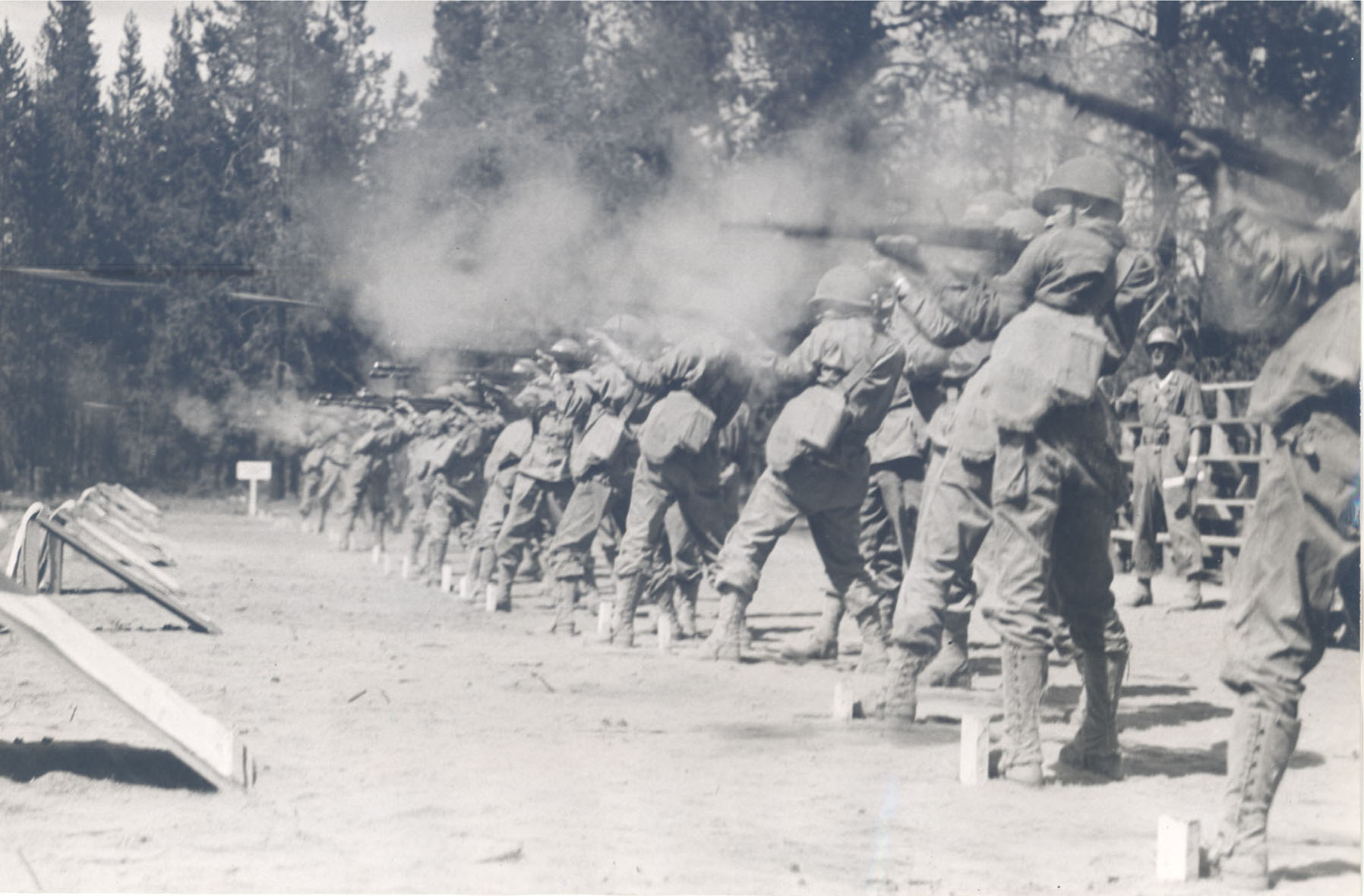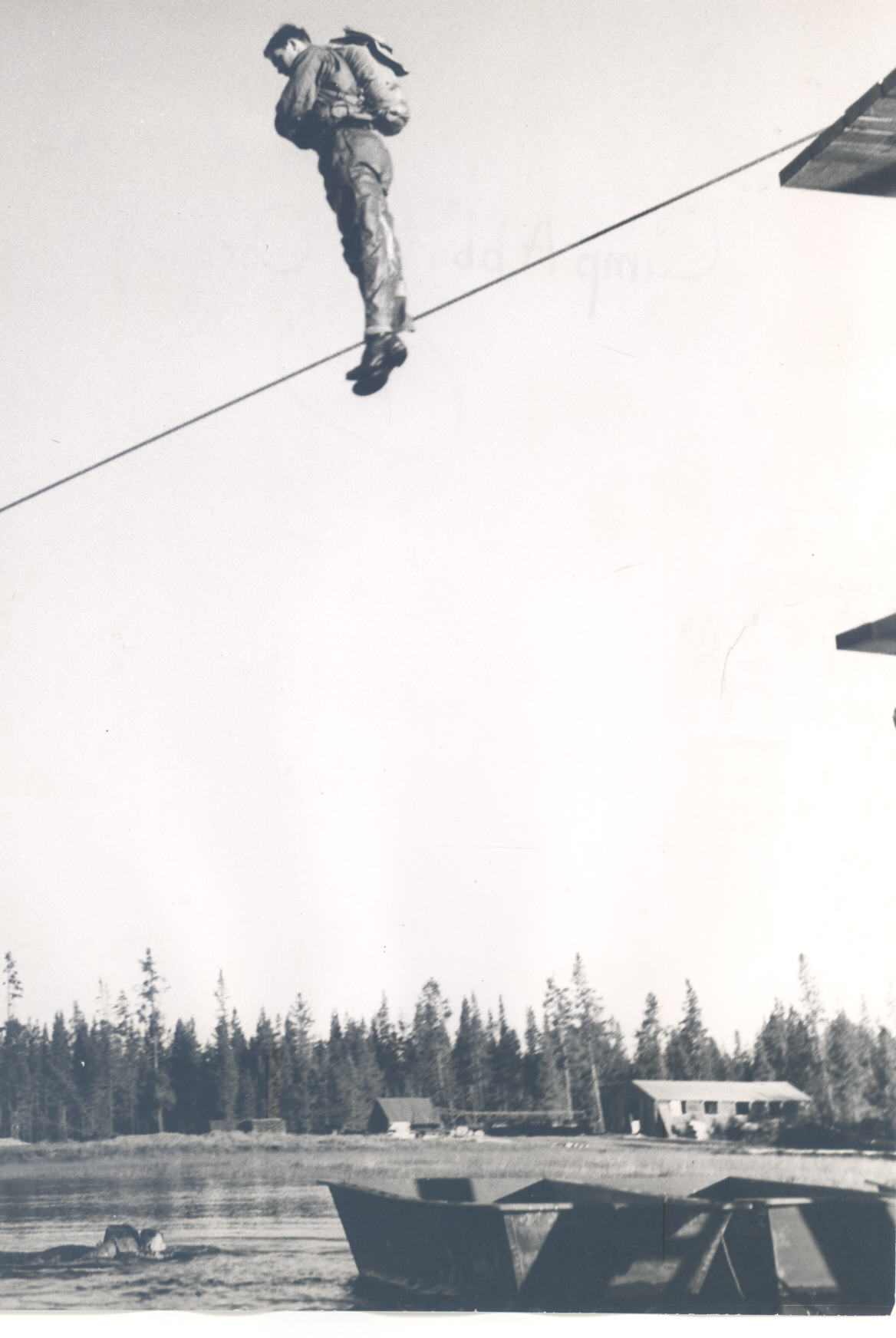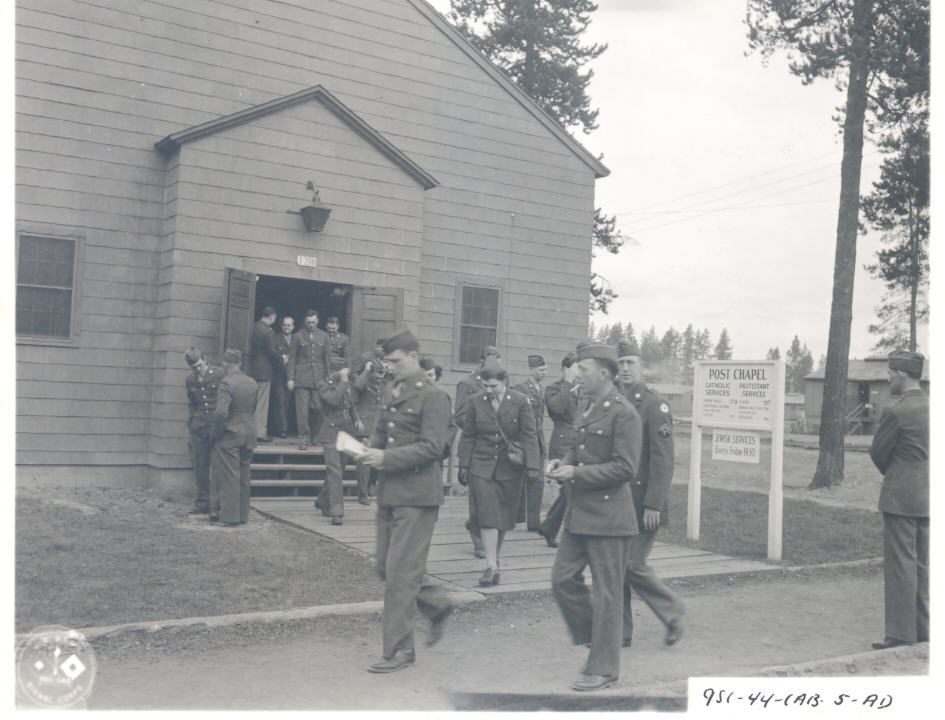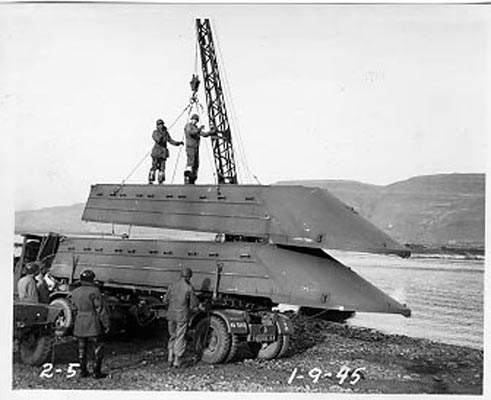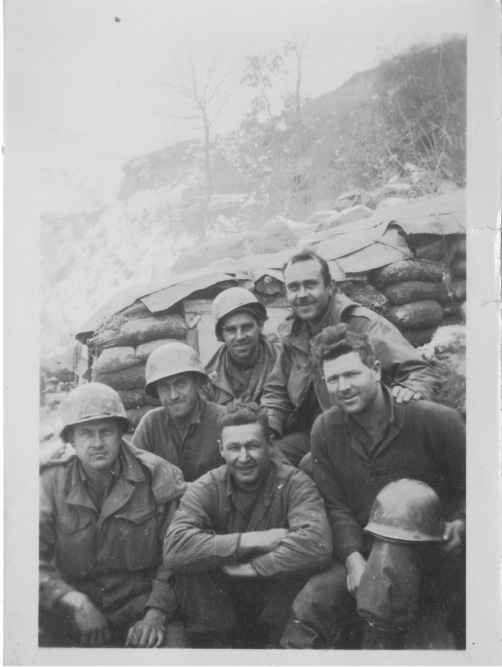Camp Abbot, located on the Deschutes River several miles south of Bend, was a U.S. Army Corps of Engineers training center where combat engineers trained during World War II. Established as an “engineer replacement training center,” it was the only such installation in the West. The other two were at Fort Belvoir, Virginia, and Fort Leonard Wood, Missouri.
The rapid expansion of the army’s engineer training was a priority in World War II. On December 4, 1942, a year after the United States entered the war, the Department of War established Camp Abbot on both Deschutes National Forest and private ranch land. The site was chosen for its isolation and its similarity to European landscapes where Allied troops would fight German and Italian forces.
Camp Abbot was named for Brig. Gen. Henry Larcom Abbot, who graduated from West Point with a degree in military engineering and was selected to lead a Pacific Railway Survey party for the U.S. Army Corps of Topographical Engineers. On September 4, 1855, Abbot and his detachment camped at a site along the Deschutes River that became Camp Abbot almost a hundred years later, in a very different world.
Col. Frank S. Besson, a Corps of Engineers officer since graduating from West Point in 1909, was the commander of the hastily built, $4 million training base. He had commanded combat engineers on the Western Front in Europe during World War I, and immediately before arriving in central Oregon in May 1943 had been in charge of the engineer replacement training center at Fort Leonard Wood. He was no stranger to Bend, where his brother John Besson, had practiced medicine.
The first trainees arrived at Camp Abbot in March 1943, six months before the center was officially dedicated. During little more than a year of operation, more than ninety thousand combat engineers trained there. About ten thousand soldiers were trained during each seventeen-week, three-phase cycle. Soldiers were first trained in basic combat skills and combat engineering tasks, followed by advanced training on how to construct and demolish bridges and other structures. The soldiers’ final three weeks at the camp were spent participating in a field exercise that tested their new skills under combat conditions. The training went on year round, through the hot days of summer and the cold days of winter, as did the war in Europe for which these combat engineers were being prepared.
In addition to combat engineer training, Camp Abbot was the base for the Oregon Maneuver in the fall of 1943. Led by Major Gen. Alexander M. Patch, the maneuver tested U.S. Army units, about 100,000 soldiers, before they were deployed overseas.
Camp Abbot closed in June 1944. Most of the camp’s buildings and other facilities were razed, and the land was returned to its previous use. The private lands at the heart of Camp Abbot were developed in the 1960s as the resort and residential community of Sunriver. One remnant of Camp Abbot remains, the Great Hall, which was built as a training exercise and served briefly as the base’s officers club.
-
![]()
Camp Abbot.
Courtesy Oreg. Hist. Soc. Research Library, 49983
-
![]()
Camp Abbot, trainees, 1943.
Courtesy Oreg. Hist. Soc. Research Library, OrHi83695
-
![Engineer soldiers training to swim]()
Camp Abbot, 1943.
Engineer soldiers training to swim Courtesy Oreg. Hist. Soc. Research Library, 90367
-
![]()
Camp Abbot.
Courtesy Oreg. Hist. Soc. Research Library, 49983
-
![]()
Camp Abbot.
Courtesy Oreg. Hist. Soc. Research Library, 49982
Related Entries
-
![Camp Rufus]()
Camp Rufus
On December 22, 1944, the Sherman County Journal reported that about a …
-
![Camp White]()
Camp White
Camp White, a U.S. Army Cantonment, was built on the Agate Desert, near…
-
![Henry Larcom Abbot (1831-1927)]()
Henry Larcom Abbot (1831-1927)
Henry Larcom Abbot was a career military engineer who is memorialized o…
Map This on the Oregon History WayFinder
The Oregon History Wayfinder is an interactive map that identifies significant places, people, and events in Oregon history.
Further Reading
Haynes, Ted, and Grace Vandevert McNellis. Vandevert—The Hundred Year History of a Central Oregon Ranch. Menlo Park: The Robleda Company, 2011.
Joslin, Les. “Camp Abbot: World War II Camp Abbot Affected Central Oregon Lives in Many Ways—A Quick Review and a Couple Short Stories.” Deschutes Pioneer Gazette (January 2015), p. 1.
O’Reilly, Michael. Camp Abbot: Sunriver’s Proud Roots. Sunriver: Sunriver Nature Center, 1989.
Swartzfager, Mark. “Camp Abbot was short-lived, but vets and Sunriver honor its 50th anniversary,” Sunriver Sun (May 1989), p. 4


